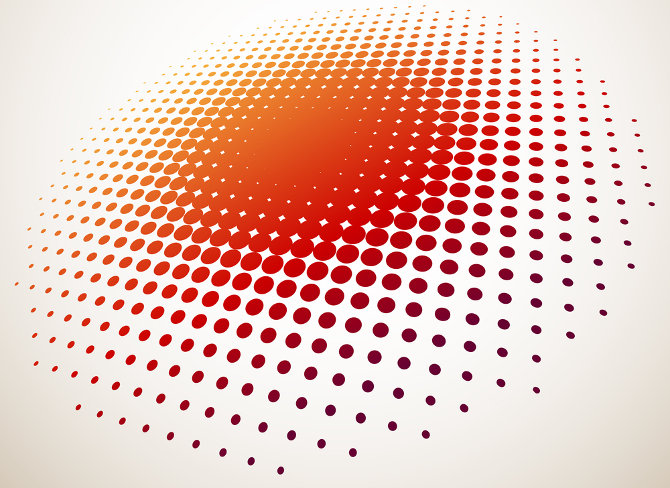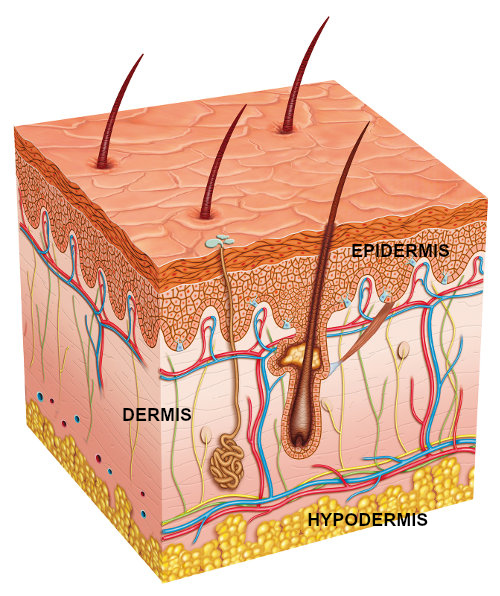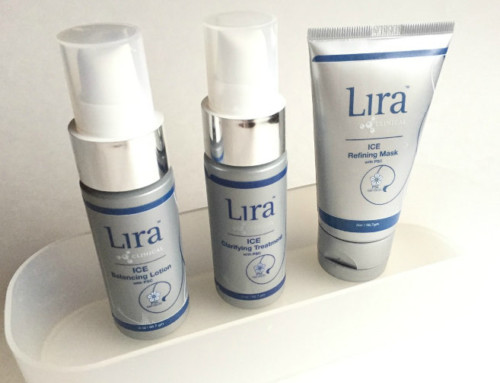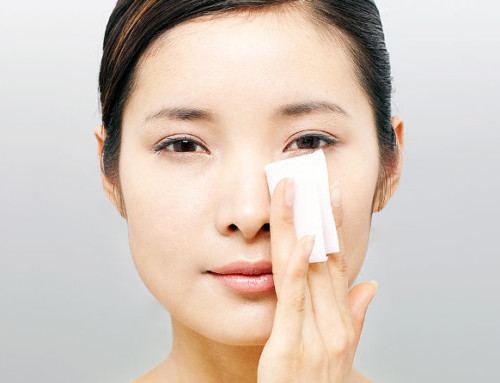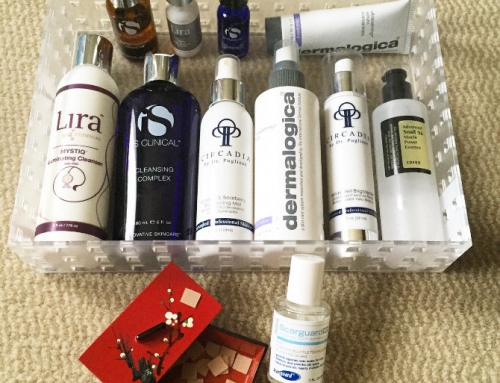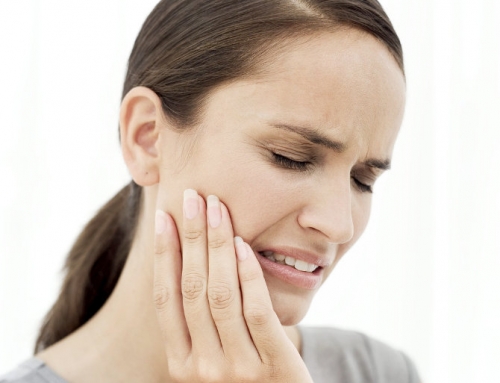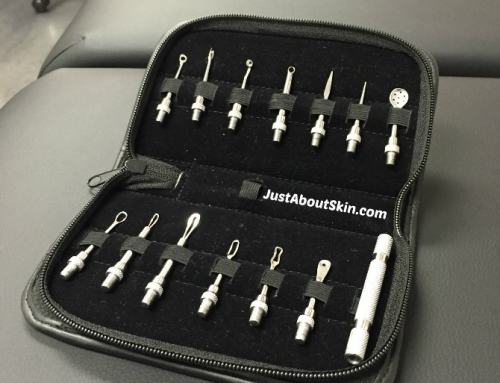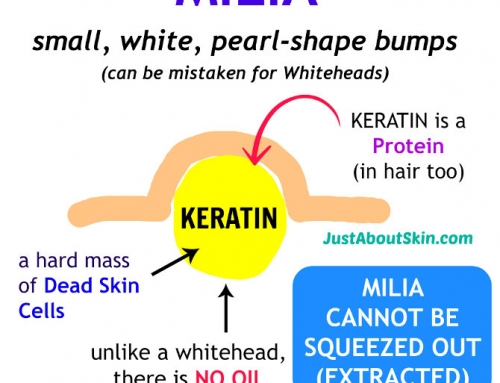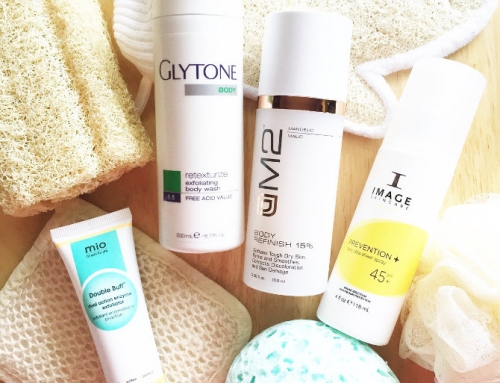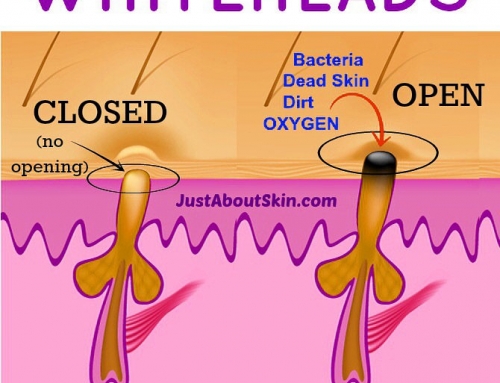Let’s begin a new topic and talk about acne. A source of great frustration for many people. And for good reason. It’s a very difficult condition to treat.
Why is acne so hard to treat? Well, to start there are multiple factors responsible for acne. And quite often, the products we use either do not address the correct factors or they aggravate skin and make the acne worse. Also, acne can be triggered by other things that we are not aware of.
Let’s look at what causes acne in the first place. Once you see why a pimple forms, treating it will make more sense.
Acne Can Either Be a Skin Type or Skin Condition
1. Acne as a Skin Type (‘ACNEIC SKIN’)
If you have suffered from persistent acne all your life (since puberty), and you have regular breakouts on your face, neck, chest, and back, then you have an acneic skin type. Your acne is a genetic skin disorder of the sebaceous gland and follicle.
2. Acne as a Skin Condition
If you experience occasional breakouts, they’re on your face but not your body, and you didn’t have a serious acne problem in your teen years, then your acne is an inflammatory skin condition. A skin condition is not permanent because it can change any time.
You can read more about Acne as a Skin Type vs Skin Condition here.
What Causes Acne?
Let’s look at what is involved in the formation of a breakout.
- Pore (technically called Follicle or Sebaceous Follicle)
- Oil
- Dead skin cells
- Bacteria
folliclebecause a pore excretes sweat, whereas a sebaceous follicle excretes oil.
[A follicle is a cavity that may or may not contain a strand of hair. ]
People say pore when they mean follicle. We’ll stick with calling them pores because it’s easier to say, and because this is the term that is used in the industry.
If there is pus inside the pore (caused by inflammation), the pus can push against the pore wall. If the wall is weak, the pus can break through the wall into the dermis. When this happens, a cyst is formed.
2. Oil
Sebum is the word for the oil produced in the pore. If you have acneic skin (genetically inherited), you may be producing too much sebum. Excess sebum comes from overactive oil glands that produce up to 3 times the normal amount of sebum.
Overactive oil glands are stimulated by male hormones (testosterone). This is why acne is common in teen years when testosterone levels increase at the start of puberty. Teenage acne is more severe in boys because they produce more testosterone than girls.
Testosterone is also why women get adult acne in their 30-50’s even if they never had acne as a teenager. Declining estrogen and progesterone levels with age make testosterone’s effect stronger. Female adult acne is also caused by hormonal fluctuations from menstruation, pregnancy, menopause, birth control pill usage, and stress.
3. Dead Skin Cells
Skin renews itself by shedding skin cells, which is happening constantly. If you have acneic skin, you may be shedding more than the average amount of dead skin.
In acneic skin, skin cells are shed 4-5 times faster than normal skin. This condition is called hyperkeratinization.
Excess dead skin cells get trapped inside pores, and mix with the excess sebum to form an impaction, or plug.
4. Bacteria
The bacteria that causes acne, P. acnes, live inside an impacted pore (a plug). They can only survive inside a plug where there is no oxygen.
Guess what the bacteria like to eat? Sebum! Sebum is made of triglycerides, the same thing that clogs up your arteries.
When there is a plug of trapped sebum, the bacteria feast away! They thrive inside a plugged up pore.
After all that feasting, they produce waste products (fatty acids). That waste causes irritation in the pore walls. Free radicals are also attracted to the waste, which leads to inflammation.
Inflammation is a process that brings immune cells (white blood cells) to the site. Pus is a mixture of those white blood cells and follicular debris. So, if you have pus, it’s a sure sign of inflammation and infection.
How Acne Forms From Beginning to End
A breakout starts out as a microcomedone – a tiny little plug containing sebum, skin cells, and bacteria. That microcomedone gets bigger and becomes a comedone, which may be open or closed.
When that comedone grows big enough, it becomes a papule, the familiar red bump. If that bump has pus, it is called a pustule.
With growing inflammation inside the pore, the pustule can rupture, and the contents of that pustule (pus) can break through the pore walls. When that happens, all that pus pours into the dermis. This creates a cyst, the kind of pimple that is deep, painful, and slow to heal.
Your skin responds by triggering enzymes to dissolve that inflamed tissue. (Those enzymes chew up the collagen.) Then it repairs the skin by producing new collagen.
This new collagen is produced in large quantities, but it’s not organized and it clumps up, creating scar tissue that is raised or depressed, and often discolored. This is why you see scarring with cystic acne.
Treating acne successfully requires addressing the four factors involved in the formation of a breakout Next time, I’ll go over how to treat each of them.

